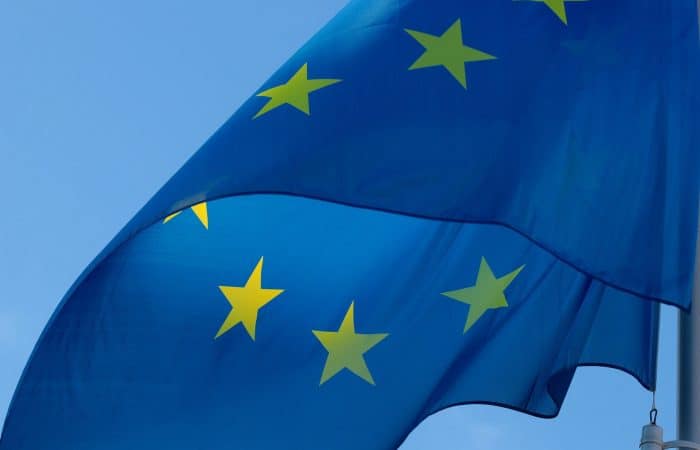The global shipping industry makes a significant contribution to the worldwide CO2 emissions. The transport of goods by sea – often involving large ships using heavy fuels – contributes approximately 3% to global GHG emissions. This may sound limited, but given the enormous growth in global trade and the international need to achieve climate goals, taking on the shipping sector was urgent.
The International Maritime Organization (IMO) – the UN organisation responsible for international shipping regulations – had been working on measures for this sector for years. For example, the first mandatory energy efficiency measures for ships were adopted in 2011. In 2018, the “Initial IMO Strategy on the Reduction of GHG Emissions from Ships” was adopted, which includes the ambition to reduce the carbon intensity of shipping by 40% by 2030 compared to 2008, and ultimately to achieve net-zero emissions over the course of the century.
What prompted the global shipping deal?
The initiative for the global shipping deal originated primarily from the IMO in collaboration with its member states. In April 2025, a ‘Net Zero Framework’ was presented, intended to impose binding rules on the shipping sector: ships over 5,000 gross tonnage (responsible for the majority of the emissions within the sector) would be covered by the proposed measures. A carbon price or levy would be imposed on ship emissions, among other things, to stimulate the transaction to clean(er) fuels and technologies (such as e-methanol or green ammonia).
According to the plans, the regulation would take effect from approximately 2027/2028. The revenue from the levies would be used to facilitate investments in sustainable shipping and to help developing countries (which are often relatively vulnerable to the effects of climate change).
What went wrong? Donald Trump blocked the deal
The US, under President Trump, strongly opposed to the proposed agreement. The Dutch news outlet NOS reported that the vote was postponed at the last minute because several countries succumbed to the pressure applied by the US.
Key factors:
- The US threatened to impose higher import tariffs, visa bans, and exclusion from US government contracts for countries that would vote in favour of the agreement;
- According to reports, Trump called for the agreement to be blocked on his social media channel;
- Ultimately, the IMO in London decided to postpone the vote on the agreement by one year, after a majority of the member states voted in favour of postponement (57 countries voted in favour, 49 against, 21 abstained).
What does this postponement mean?
The postponement is a significant setback for the ambition to rapidly make shipping more sustainable. According to international analyses, the delay means:
- Less certainty for the shipping industry regarding future regulations, delaying investments in clean(er) fuels and technologies;
- Potential delays in achieving climate goals. Critics say this also undermines the IMO’s authority;
- For countries that are heavily dependent on shipping or are vulnerable to climate change, this delay is particularly worrisome.
Why did the US block the agreement?
The US blocked the carbon reduction agreement because it feared that the proposed measures – such as a global levy on shipping emissions – would harm the American economy and shipping sector. Washington called the plan a ‘global carbon tax on Americans’ and argued that it would weaken the US’s competitive position. Moreover, the administration considered it unfair that the proceeds from such levies might go to international climate funds outside the shipping sector.
What’s next?
Although the agreement was postponed, this does not mean nothing will happen anymore. Possible developments:
- In the coming period, negotiations within the IMO will continue to refine the framework’s text and bring it back to the table;
- Member states can operate in parallel: for example, through regional or national measures (as the European Union does through its emissions trading or other fuel standards), they can continue to take steps. The Netherlands has stated that it remains committed to global emissions reduction. However, given the international nature of global trade, international regulation is desirable, also to create a level playing field;
- Industrial players and investors will closely monitor the outcome – uncertainty may mean they postpone major green investments until there is more clarity;
- Politically, this topic will likely resurface at larger climate negotiations, such as the upcoming international climate conferences (e.g., COP30), and it could lead to pressure on countries to reach an agreement after all.
Conclusion
The blocking of the global shipping climate agreement by the US is a significant moment in the climate and maritime world. It demonstrates how politics, economics, and international cooperation intersect – and how the shipping sector can play a significant role in the broader climate agenda. The delay represents a missed opportunity, but at the same time, it also creates space for new forms of action and cooperation. If, and how quickly, shipping can finally get on track for a low-carbon future, remains highly dependent on political will, technological developments and international cooperation.
Morge information
If you have any questions regarding this article, please contact our Trade, Industry, and Logistics specialists.




